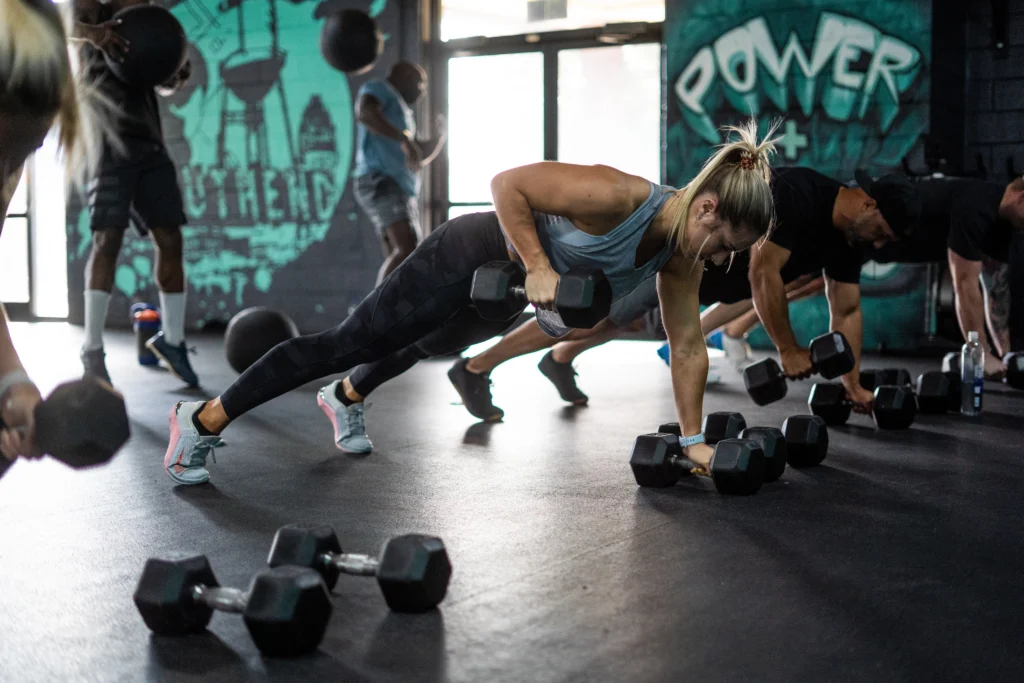Is MADabolic the Best Group Fitness Workout for You?

Discover the key differences between MADabolic’s structured, strength-based approach to group fitness and traditional workout methods to make an informed choice
It has never been easier to find a fun and interesting way to exercise — there are countless options to choose from — each promising to deliver the best results. Choice isn’t the issue; the issue is usually finding something that is motivating and garners results. For those looking to make an informed decision, understanding the differences between these options is a must.
One choice among many is fitness franchise MADabolic, known for its structured, strength-based approach to fitness. MADabolic workouts are built around interval training, with strength as the foundation.
To help you navigate these choices, Athletech News compares MADabolic to traditional workouts, providing a detailed look at their workout structure, effectiveness and overall experiences.
What Makes a MADabolic Workout Different?
MADabolic offers demanding yet adaptable group workouts. These sessions aim to boost strength, reduce body fat and support lean muscle growth. MADabolic caters to a wide audience, including casual fitness enthusiasts, runners, triathletes and yoga practitioners, although the brand’s typical member tends to be someone highly dedicated to bettering themselves through fitness.
Brandon Cullen, Madabolic co-founder and chief concept officer, told Athletech News that the initial MADabolic program served as the bridge between sports-specific training and the run-of-the-mill bootcamp-style workouts commonly found at big-box gyms.
“Fast forward 15 years, and not much has changed,” Cullen says. “The only difference is that those same bootcamp-style workouts are now branded concepts within the boutique industry, yet they still offer the same quality of training you would have received at your local YMCA a decade ago.”
Cullen says MADabolic provides high-quality training for everyday people and athletes “beyond their sports careers.” In other words, they “cater to high-achievers who value strength, structure and accountability.”
The 50-minute classes are held 7 days per week, and the average client trains four times a week. Each class consists of five movements based on a specific work-to-rest ratio, led by a qualified trainer who ensures personalized attention and safety.

Cullen says the following aspects make MADabolic workouts scalable and accessible through:
- Organized training floor: Locations use a color-coded system to indicate weight levels, grouping clients by strength and ability.
- No barbell requirement: By excluding barbells, MADabolic reduces the risk of injury and complexity, making the program accessible to both novices and experienced athletes.
- Focus on fundamental movements: Emphasizing basic, repeatable movements ensures accessibility and adaptability for all clients, preparing them for real-life activities.
Here’s a comparison of that structure versus something more traditional.
MADabolic:
- Interval training: MADabolic’s workouts are based on a structured interval training system with three signature intervals – Momentum (2:1 work-to-rest), Anaerobic (1:1 work-to-rest), and Durability (3:1 work-to-rest). These intervals ensure varied intensities and comprehensive conditioning.
- Strength-driven: Emphasizes strength as the foundation of fitness, incorporating high-intensity strength training exercises to build a solid base for all fitness activities.
- Program design: Utilizes a macro, meso and micro programming approach to ensure progressive overload and continuous improvement, making the workouts highly effective and structured.
Traditional Workouts:
- Steady-state cardio: Commonly includes activities like running, cycling or swimming at a steady pace. This approach primarily focuses on cardiovascular health.
- Isolated strength training: Typically involves working on specific muscle groups using weights or machines, which can lead to imbalanced training. For example, if you only do static training, you might miss out on the more functional strength that comes from other types of training, where you move in different planes of motion.
- Less structured: Often lacks the structured progression and varied intensities found in interval training programs, leading to potential plateaus and diminished returns.

Program Effectiveness
Exercise is one thing, but what about results? At the end of the day, that’s what matters. The body responds in many different ways to physical activity. MADabolic’s intervals are based on a firm foundation that prioritizes movement quality, which forms the basis of progression.
“Repetition of these baseline movements accelerates and sustains that progression,” says Cullen.
The varied intensities form MADabolic’s three signature interval styles — momentum, anaerobic and durability — as the critical complement to that repetition.
“Our program is not limited to a single speed; we condition our clients by challenging various energy systems through a spectrum of pace demands and movement patterns,” says Cullen, who breaks it down as follows:
Momentum intervals focus on athleticism and endurance, characterized by increasing intensity. The workout begins at a 70% pace, builds to an 80% pace, and finishes at a 90% controlled sprint pace.
Anaerobic intervals showcase speed and power, pushing clients to a 100% maximum effort pace.
Durability intervals emphasize time under tension, maintaining a steady 80% pace from start to finish.
These three interval styles are evenly distributed throughout the week, month, quarter and year, providing clients with a balanced training stimulus, and resulting in well-conditioned everyday athletes.
A class might include anything from Turkish get-up variations, kettlebell work, medicine ball throws, heavy carries, boxing and more.
Here’s a comparison of the training variables in both a MADabolic workout and a traditional approach.
MADabolic:
- Full-body workouts: Each session targets multiple muscle groups, improving overall strength and conditioning. This approach ensures balanced development and reduces the risk of injury.
- Varied intensities: Incorporates different intensities to challenge various energy systems, leading to better endurance and power. The structured intervals ensure that workouts are always engaging and effective.
- Scientific foundation: Designed based on scientific principles to maximize results and prevent plateaus. The focus on strength-biased interval training is backed by research.
Traditional Workouts:
- Targeted results: May provide significant improvements in specific areas (e.g., cardiovascular health, muscle hypertrophy) but may lack overall conditioning. This can lead to imbalances and limit overall fitness progress.
- Less variety: Steady-state cardio can become monotonous, and isolated strength training may not provide the same level of cardiovascular benefit.
- Plateaus: Without structured progression, traditional workouts can lead to plateaus and diminished returns, making it harder to achieve long-term goals.

The Experience
Sometimes the choice comes down to how a workout makes you feel. Understanding the insider experience can provide valuable insights into a workout’s effectiveness and how much community support is available.
Cullen says the most significant shift across the membership base is the change in mindset about fitness and health.
“Members move from chasing quick fixes to pursuing strength and longevity,” he says. “This paradigm shift is reflected in our low churn rates and the complete lifestyle changes observed systemwide.”
Here’s how client experiences of both MADabolic and traditional workouts compare, highlighting the differences in motivation, satisfaction and guidance.
MADabolic:
- Community and accountability: MADabolic fosters a strong sense of community, helping clients stay motivated and accountable. The supportive environment encourages members to push their limits and achieve their fitness goals.
- Testimonials: Numerous success stories highlight significant transformations. For instance, members often experience a mindset shift from seeking quick fixes to focusing on long-term strength and health.
- Instructor expertise: Educated trainers play a crucial role in guiding clients and ensuring proper technique. Their expertise helps clients maximize their workouts and prevent injuries.
Traditional Workouts:
- Individual effort: Often relies on personal motivation, which can wane over time. Without a strong community or structured support, it can be challenging to stay committed.
- Varied experiences: Client satisfaction can vary widely based on personal discipline and the gym environment. Some may thrive, while others may struggle to see consistent results.
- Limited guidance: Less access to expert guidance unless working with a personal trainer. This can limit the effectiveness of workouts and increase the risk of injury.
Which Is Right for You?
At the end of the day, what is the right choice? You might prefer MADabolic if you like structured, full-body workouts with varied intensities; value strength training and scientific programming; and you thrive in a community-focused environment with accountability.
Traditional workout options might be best for you if you enjoy steady-state cardio or isolated strength training, prefer working out independently or have super specific fitness goals, or if you prefer one-on-one access to a personal trainer for guidance and motivation.



